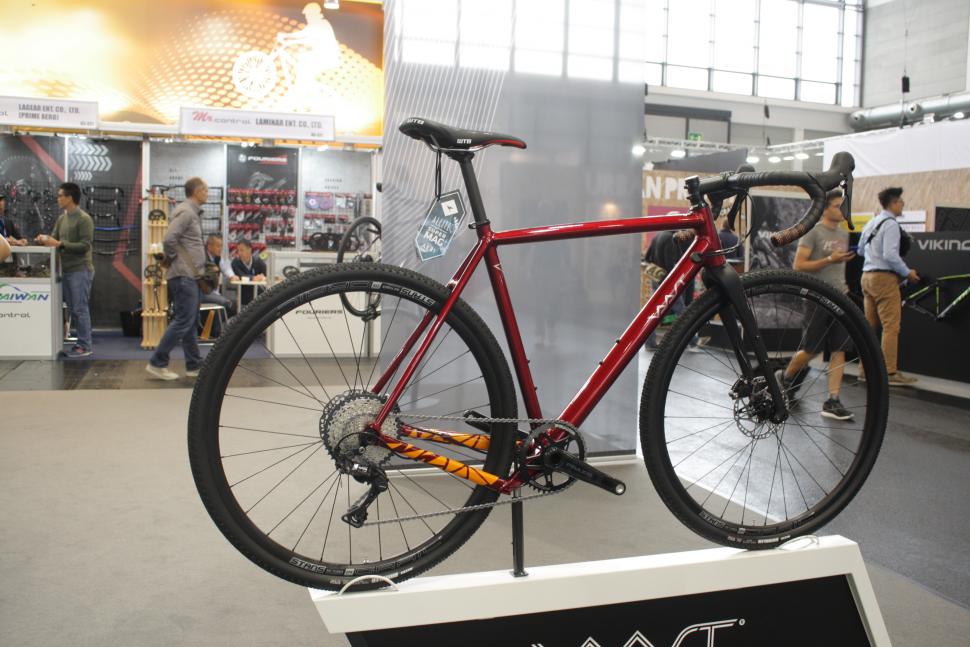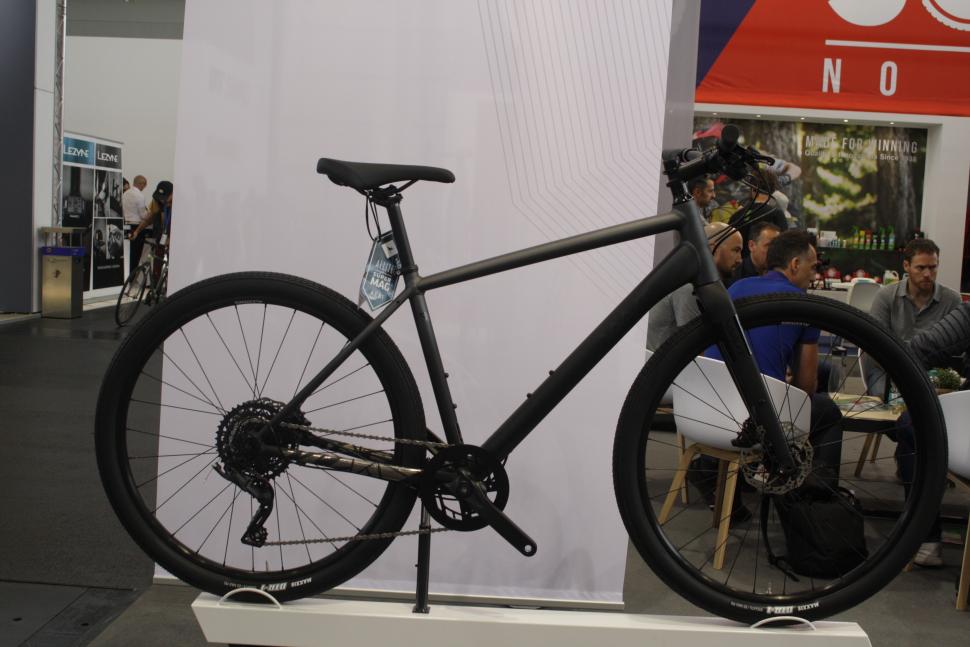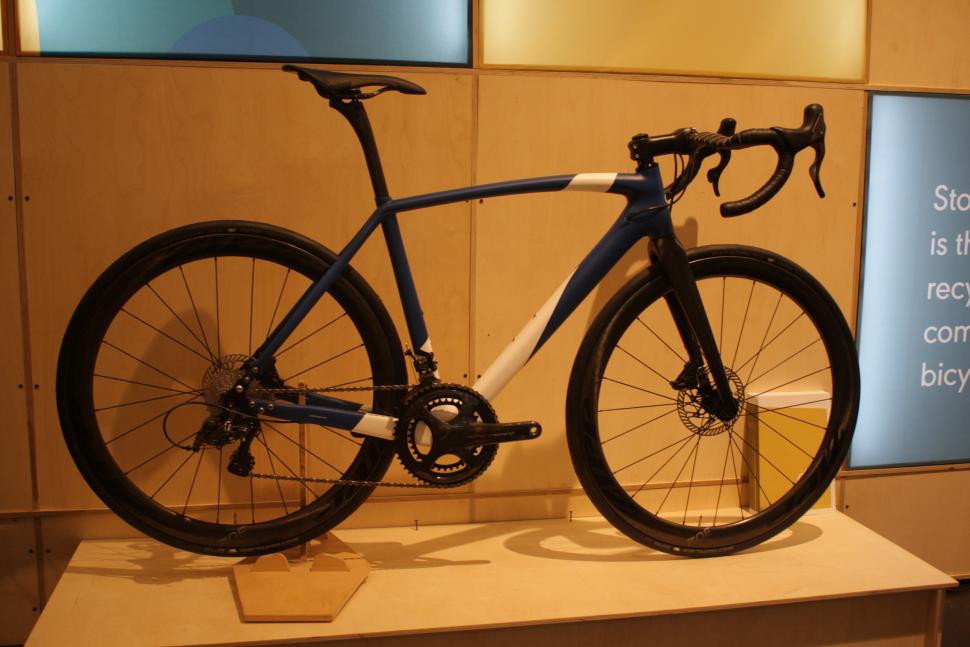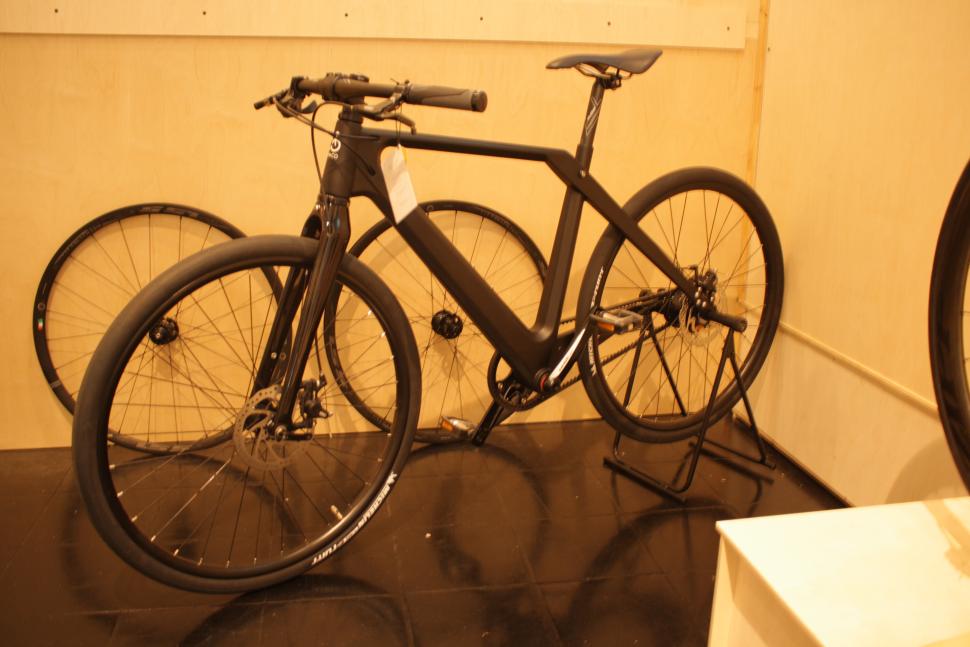- News
- Reviews
- Bikes
- Accessories
- Accessories - misc
- Computer mounts
- Bags
- Bar ends
- Bike bags & cases
- Bottle cages
- Bottles
- Cameras
- Car racks
- Child seats
- Computers
- Glasses
- GPS units
- Helmets
- Lights - front
- Lights - rear
- Lights - sets
- Locks
- Mirrors
- Mudguards
- Racks
- Pumps & CO2 inflators
- Puncture kits
- Reflectives
- Smart watches
- Stands and racks
- Trailers
- Clothing
- Components
- Bar tape & grips
- Bottom brackets
- Brake & gear cables
- Brake & STI levers
- Brake pads & spares
- Brakes
- Cassettes & freewheels
- Chains
- Chainsets & chainrings
- Derailleurs - front
- Derailleurs - rear
- Forks
- Gear levers & shifters
- Groupsets
- Handlebars & extensions
- Headsets
- Hubs
- Inner tubes
- Pedals
- Quick releases & skewers
- Saddles
- Seatposts
- Stems
- Wheels
- Tyres
- Health, fitness and nutrition
- Tools and workshop
- Miscellaneous
- Buyers Guides
- Features
- Forum
- Recommends
- Podcast
 IMG_6269.JPG
IMG_6269.JPGSustainable cycles: cutting edge waste-reducing frames from Coh&Co and Vaast Bikes
Sustainability and protecting the environment are of course hot topics in 2019; and while cycling is infinitely better for the planet than using a vehicle powered by fossil fuels, the manufacturing process to produce bicycles isn't always so green.
Ohio brand Vaast Bikes are aiming to change this with their framesets made of Allite's 'Super Magnesium', the first in the world to do so. It's 100% recyclable, breaking down far quicker than carbon or aluminium, meaning a new bike made of magnesium alloy in the future could technically be made out of material that used to exist on another bike. As magnesium is readily available on earth, it's also more sustainable to get hold of and manufacture than alloy or titanium.
There are even claimed performance benefits; Vaast say their frames are 33% lighter than aluminium, 56% stronger than grade 1 titanium and 20 times better at absorbing shock than alloy. They're launching with four models (two trail bikes, a gravel/adventure model and a hybrid) and should be available through European distributors soon.
Meanwhile, Copenhagen-based Coh&Co are making frames using their completely unique 'Stoneweave' production... it's literally a bike made of stone, partially at least! The manufacturing process for the frame interweaves stone and carbon fibres, which fuses them into what Coh&Co call "the world's first recyclable high performance composite resin". Co-founder Paul Harder Cohen told us that while the frame itself can't necessarily be forged into another bike frame at the end of its life cycle (like Super Magnesium), it can still be reused in other industries. The frames are also exceptionally tough, which means corrosion isn't a worry.
If that wasn't sustainable enough, Coh&Co also have a unique buy back agreement; each bike comes with a lifetime warranty, and after ten years you can choose to sell it back to Coh&Co. They will then either refurbish the bike and get it back on the streets, or reclaim the material that can then be used for other purposes.
Coh&Co's Erik urban commuter starts from 1,476 euros. We weren't told prices for the very tasty Campagnolo-equipped racer, but we know the frame weighs in at around 1.1kg.
Jack has been writing about cycling and multisport for over a decade, arriving at road.cc via 220 Triathlon Magazine in 2017. He worked across all areas of the website including tech, news and video, and also contributed to eBikeTips before being named Editor of road.cc in 2021 (much to his surprise). Jack has been hooked on cycling since his student days, and currently has a Trek 1.2 for winter riding, a beloved Bickerton folding bike for getting around town and an extra beloved custom Ridley Helium SLX for fantasising about going fast in his stable. Jack has never won a bike race, but does have a master's degree in print journalism and two Guinness World Records for pogo sticking (it's a long story).
Latest Comments
- Keykey1985 3 sec ago
He wasn't brake-checking me, he was trying to get me to stop. Nothing good would have come from me stopping.
- PRSboy 17 min 36 sec ago
It was designed around 28mm tyres but there's lots of clearance and could certainly take bigger tyres.
- Cugel 20 min 28 sec ago
A dinosaur version is shurely for the kiddies. Myself I'd like The Hindenburg. There may be The Freisian, filled with methane rather than hydrogen,...
- Rendel Harris 21 min 56 sec ago
No evidence on the video of any interaction between themselves and the cyclist so possibly they simply didn't get the reg number?
- Rendel Harris 34 min 37 sec ago
When I see SLOW HORSES I always think ah, so this is where the ones I bet on are kept...
- ktache 1 hour 10 min ago
The proximity to the Transport Research Labs at Crowthorne means that the area often gets weird new stuff.
- chrisonabike 1 hour 16 min ago
No great mystery in either case, surely? Both US politician and the motor trade say "choose us and your life will be better and easier!" And other...
- stonojnr 3 hours 28 min ago
theres an attitude I encounter alot locally, and demonstrated in bucket loads by drivers on my commute home tonight, that cyclists shouldnt be on...
- Keesvant 4 hours 47 min ago
If the chains snap that is lack of build quality or material.....
- Hirsute 5 hours 43 min ago
"Wisdom is better than weapons of war, but one sinner destroys much good."




Add new comment
6 comments
A stone bike.. wait waa what?
What's the issue? We already have gravel bikes.
I have a strong feeling here that mean basalt fibres. A fibre woven from rock that is spun out sort of like candy floss is. I have a camera tripod made of it. It's not quite as light as carbon but I suspect it's a LOT cheaper.
Combinging carbon with accents of basalt is actually a great way to augment performance.
Although the commodity kilo price of basalt is a fraction of that of carbon, the primary motivation for utilizing stone is definetly not one of costsavings - the truth of the matter is that impregnating basalt with our recycleable prepreg-resin system in such small quantities and managing it in production results in a kilo price several times that of carbon. Lets face it, mass produced carbon prepreg is pretty cheap these days and ordering a custom roll of an esoteric fiber construction is very costly.
So, why use basalt when it is more expensive, heavier, and not as stiff as carbon?
We interlace varying amounts of basalt in different areas in our frames and we do this in regions where we neeed to alter the galvanic properties of the frame, the toughness of a component, or the harmonic resonance of the frame.
Basalt has three primary characteristics that allow us to augment the performance of our carbon frames.
First off basalt is really good as an interface bettween the mechanical connections like the seatpost, the dropouts or the bottom bracket or headset. This is because carbonfiber is basically graphite which means it is EXTREMELY cathodic and promotes corrosion of just about any metal it can exchange electrons with. Carbon can be really fussy about how you interface with it. Basalt allows us to provide a mechanical interface that natraly toughens.
Secondly, basalt is also really great for toughening a carbon laminate in an urban biccyle like our 'Erik'. Using basalt we can build a thicker, bulkier laminate that can take the bumps and blows of urban life without becoming harsh and unpleasantly stiff.
Finally we use basalt in transition points in our frame to change the harmonics of the frame and absorb roadnoise. Reducing vibration from road-noise is one of the most important things in designing and building a frame. Road noise causes significant reduction of bloodflow to the extremeties depleting oxygen delivery and thus the riders power reserves - sucking the life out of your legs.
Baslat, when employed properly, can produce a better bike that lasts longer and allows the rider to perform better and more comfortably without sacraficing power transfer. We believe that makes it worth spending a bit more.
Best regards,
Paul Harder Cohen
Coh&Co Copenhagen
whats wrong with that? My bathroom scales reckon I’m made of stone… 14 of them!
The magnesium alloy bike though, as long as they don’t make an e-bike model. Imagine the spectacular fire potential of thermal runaway lithium and magnesium, and you can’t put water on it because of the magnesium…
Monty Python, ahead of its time as ever.